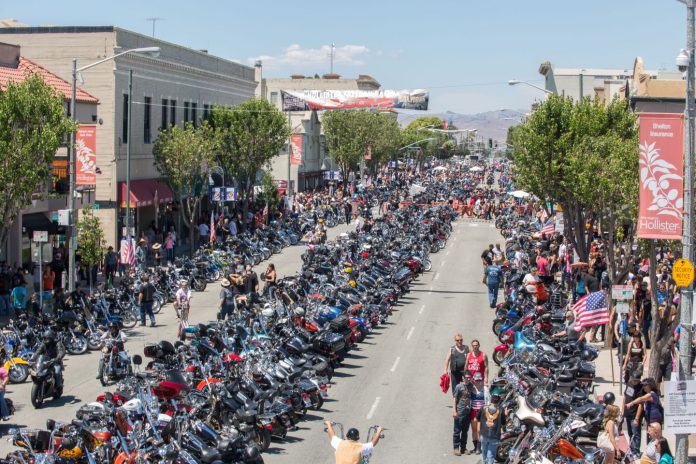The City of Hollister is once again searching for a promoter for its signature Fourth of July motorcycle rally and each time that happens it means starting all over rather than improving on previous events. There has to be a fundamental reason the rally cannot sustain a good promoter, which is a key element for success. My review of the concept and implementation indicates that the city and rally supporters have not taken an in-depth business approach to the event.
A thorough analysis of the basic financials of the whole rally would allow the city and promoter to decide if it has a future and, if so, to right-size and customize the rally for the best benefit to all parties. As the old saying goes, 10 percent of even a little is more than 100 percent of nothing.
Even a quick review of the budgets and the way the City of Hollister handles the rally finances shows that it has failed to take a solid business approach to this annual event. Some of the issues are beyond its control and lie with the government accounting system that is not event oriented and that fact that the rally straddles the fiscal years for accounting purposes. However, the major concern is that the city has no real idea of what the event is worth to the taxpayers, the business community, or to potential promoters. The rally should be analyzed as an ongoing enterprise in its totality and the city government is simply not equipped to do that because government does not work that way.
Most of all, the rally needs a committee of savvy, hard-nosed, independent businesspeople and community members to advise the city and evaluate the event’s viability and worth under several options. These must be people without a vested financial or political interest in the event.
The current city rally finances are operated on a cost basis. The city produces a budget for its estimated costs and that, essentially, becomes the bottom line. Officials then seek the highest bidding qualified promoter who will, at a minimum, cover those costs. They are essentially selling the rally and the public services to that promoter. The problem is that they do not have any real idea how much income the rally can reasonably generate. Therefore, they do not know if the bids are much too low or unrealistically high. Both low and high bids are problems just waiting to happen.
Many of the internal cost estimates have gyrated substantially from year to year and that is made more difficult because there is no total event-based budget, only a city budget. An event-based budget is essential in addition to the required governmental expense budget.
Almost all the key revenue producing figures of the total rally are poorly supported or totally unsupported estimates. This include rents, number of visitors, average spending, and sales taxes collected. Some substantial collected fees, such as business licenses, were estimated unrealistically high, then lowered, and eventually zeroed out of the budget, the latter simply because the money goes into the General Fund. I estimate it’s still revenue of tens of thousands of dollars above the administrative costs and even if the government does not count it that way it should be credited to the rally in an event budget of the type I’m proposing. After all, increased sales tax collections are not credited to the rally either, but they certainly exist and offset some city cost.
Much of the rally revenue goes directly to the promoter, some local and temporary businesses, or the state taxing agency and the city has not been doing enough things it could do to collect information on those finances.
No, we should not try to get back into the T-shirt business. I strongly opposed that stupid mistake the first time around, but as a business, not as a government project, you must have some idea of the value of what you are selling and make sure that special revenue streams such as nonprofit support, sales taxes and fees are collected. If not it will be impossible to successfully support the event over time.
For instance, attendance is unknown. We do not want to charge admission but there are still several ways to get good attendance figures. One would be to require all adults in the event area to wear a bracelet they get free at the entrances. Count the bracelets issued and you get an estimate of the total headcount. Another method would be to use the camera system to do hourly headcounts, etc.
We need to know what the promoters are charging and the vendors are willing to pay in rents. We have the names and addresses and we should call survey vendors from former years and find out if they intend to return and if not, why not, and the rents they paid in the past and are willing to pay in the future especially in relation to similar events elsewhere. The city should informally audit sales and sales taxes by having people walking around and observing the businesses and business practices and noting transactions. Information from local nonprofits who run operations at the rally would help establish sales baselines.
If we make those changes in the way the rally is managed and educate ourselves on its real value and realistic potential, we can make logical decisions on the rally’s future. Without those changes only one option remains: The rally will be gone again in short order.










